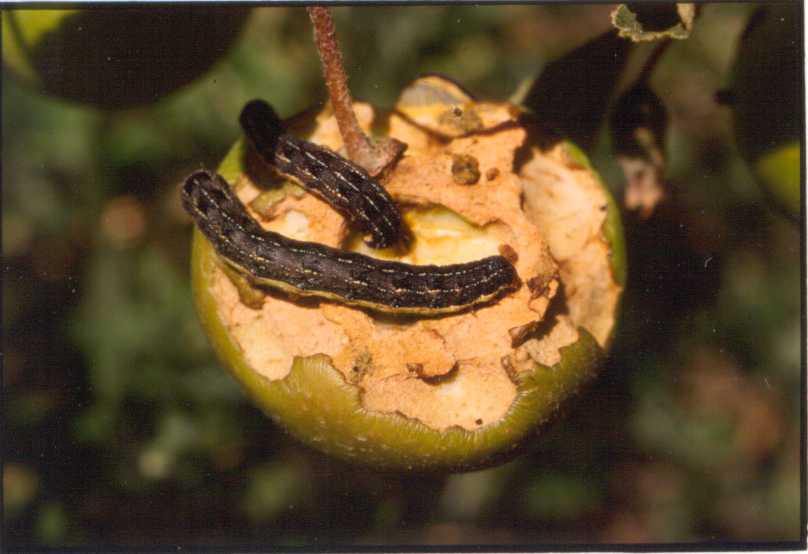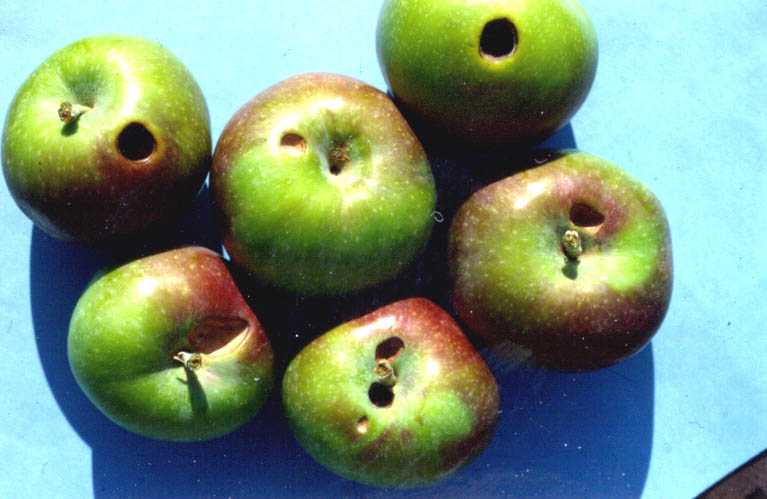Cutworms and Armyworms
General Description
Several species of cutworms and armyworms are present in orchards throughout the season and abundance can vary from year to year.
Hosts
Various grasses and broadleaf plants; tree fruits in the absence of preferred food plants.
Damage
In the spring some cutworm larvae climb to feed on the buds and young shoots (e.g. spotted and variegated cutworms). They will also damage fruit in the late summer in the absence or preferred hosts (Fig. 1, 2), creating shallow clean channels in the fruit surface that are enlarged as the larvae grow. Cutworms hide in the soil or under plant debris under trees during the day, emerging at night to feed. Many armyworms will feed during the day and hide at the base of tree at night.
 |
 |
| Figure 1. Bertha armyworm larvae feeding on apple. (BCMA) | Figure 2. Cutworm feeding damage to apple. (S. Brown) |
Identification
Larva - fleshy, smooth caterpillar up to 3-4 cm when mature that curls up when handled (Figs. 1, 2). Usually pale to dark brown or gray body with various markings along the back and sides.
.jpg) |
|
| Figure 1. A cutworm larva. (BCMA) | Figure 1. A cutworm larva. (BCMA) |
Adult - generally non-descript moths with grayish to brownish forewings with various markings. Active only at night and attracted to lights.
Life History
Overwinter as eggs, larvae, pupae or adults depending on species. Thus all life stages can appear during the growing season depending on the species. Usually only one generation per year.
Monitoring
Inspect trees weekly beginning in the spring when buds are swelling, especially in areas where previous cutworm/armyworm damage was found. During the season monitor lower hanging fruit for feeding damage.
Management
Biological Control
Several kinds of predatory and parasitic insects attack cutworms and armyworms. Unfortunately not in time to prevent damage under high pest pressure.
Cultural Control
Avoid mowing ground cover or patches of weeds heavily infested with cutworms/armyworms which will drive them into the trees in search of food. Try to keep bottom branches from touching the ground cover by tying them up or by keeping the ground cover mowed under the trees.
If only a few trees are affected, examine the upper 2-4 cm of soil under the affected trees and destroy any found.
Chemical Control
In areas where cutworms/armyworms are noticeable by their presence or damage, spray the ground around the base of the affected trees with Ambush using the rate for cutworm control in cereal crops.. Apply the products in the evening for best results.
